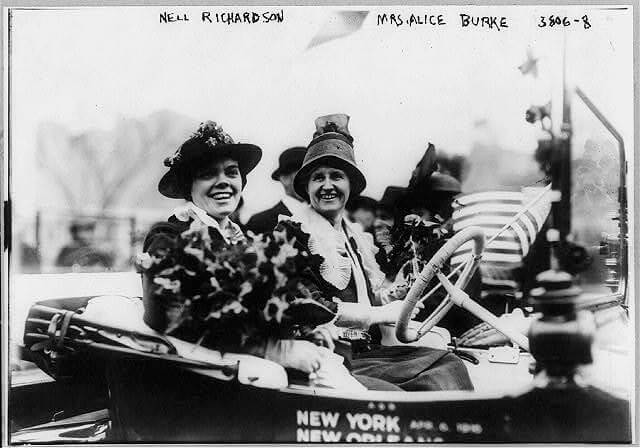While there are many rights and privileges that all members of today’s developed societies have, we often take for granted the fact that not all people had these rights throughout history. Never is this truer than for women. Throughout the centuries women have fought for the right to vote despite obstacles and setbacks to achieve the freedoms that we know today. Different countries and areas throughout the world have extended the right to vote to women at different times usually in response to societal pressure.
Here is a brief look at how women got rights.
While women throughout the centuries have fought for the right to vote there are times and places where some women have always had this right. In medieval France and several other European countries, voting for city and town assemblies and meetings was open to the heads of households, regardless of gender. Women’s suffrage was granted by the Corsican Republic of 1755 when their Constitution stipulated a national representative assembly elected by all inhabitants over the age of 25, both women (if unmarried or widowed) and men. Suffrage came to an end when France annexed the island in 1769. Lydia Chapin Taft, became the first legal woman voter in America in 1756. She is recorded has having voted on at least three occasions in an open New England Town Meeting, at Uxbridge, Massachusetts, with the consent of the electorate. This would have been between 1756 and 1768, during America’s colonial period. New Jersey also granted women the vote (with the same property qualifications as for men, although, since married women did not own property in their own right, only unmarried women and widows qualified) under the state constitution of 1776, where the word “inhabitants” was used without qualification of sex or race. New Jersey women, along with “aliens (persons of color or negroes)” lost the vote in 1807, when the voting franchise was restricted to white males, partly in order to combat electoral fraud by simplifying the conditions for eligibility.
The first unrestricted women’s suffrage in terms of voting rights in a self-governing, independent country was granted in New Zealand. Following a movement led by Kate Sheppard, the women’s suffrage bill was adopted just weeks before the general election of 1893. The state of South Australia then followed by granting both universal suffrage and allowed women to stand for state parliament in 1895. The Commonwealth of Australia provided this for women in Federal elections from 1902 (except Aboriginal women). Finland was the first major European country to introduce women’s suffrage where women were granted the right both to vote (universal and equal suffrage) and to stand for election in 1906.
Shortly before the First World War Norway (1913) and Denmark also gave women the right to vote and it was then extended throughout the remaining Australian states. Canada granted the right to all women in 1917 (except in Quebec, where it was postponed until 1940) as did Soviet Russia. British women over 30 and all German and Polish women had the vote in 1918, Dutch women in 1919 and American women in states that had previously denied them suffrage were finally allowed the vote in 1920. Turkey granted voting rights to women in 1926. In 1928, suffrage was extended to all British women on the same terms as men over the age of 21. One of the last places to grant women equal voting rights was Liechtenstein in 1984. Since then only a few countries have not extended voting rights to women, usually on the basis of certain religious interpretations.
The country of Bhutan only allows one vote per property, a policy that many claim, in practice, prevents women from voting. However, inheritance in Bhutanese society is matrilineal, and daughters inherit their parents’ property and men are expected to make their own way in the world, Bhutanese women could potentially have greater political power, although at this point it is only theoretical. However, this one vote per property practice is planned to be changed once the newly proposed Bhutan constitution is accepted before 2008.


Leave a Reply